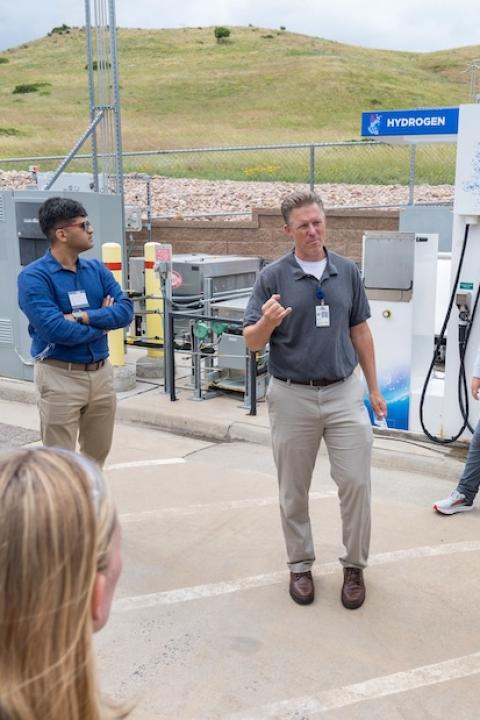
U.S. employers are grappling with unprecedented recruitment and retention issues as inflation picks up on the heels of the COVID-19 pandemic. Some companies are making an honest attempt to bump up pay and perks to offset inflation without tearing their bottom line to pieces. For many others, though, the labor situation and challenges surrounding worker mobility comprise a giant self-own that predates the pandemic by many years.
Labor and inflation: What not to do
Leading employers like Starbucks and Amazon are dealing with a genuine union movement for the first time in their history, and the reason is not hard to find.
For generations, workers in the U.S. have seen inflation steadily chip away at the federal minimum wage. More recently, part-time workers have had to deal with new “on-call” scheduling and other burdens on their time, while the cost of housing, health care and higher education has soared.
Add in the structural racism that has denied the support of home ownership and intergenerational wealth to Black households and other people of color, and the stage was set for a worker movement.
COVID-19 was the spark that lit the growing pile of fuel. For all the businesses that suffered during the lockdowns, many thrived under the new normal of e-commerce, delivery services and remote communication. As a result, some of the world’s wealthiest business owners, executives and investors have grown noticeably wealthier. The impact of inflation will not touch them personally, even as millions of ordinary households continue to struggle.
Editor's note: Be sure to subscribe to our Brands Taking Stands newsletter, which comes out every Wednesday.
Earlier this year, the Washington Post drew attention to the wealth disconnect. Reporter Eli Rosenberg noted that changing jobs has is a course of action for workers seeking higher pay that predates the pandemic. The outbreak only exacerbated a common practice. Rosenberg suggests that workers are more inclined to seek raises when they know their company has garnered record profits, and they are probably more outraged than ever to be denied a raise when higher-ups and investors are rewarded disproportionately for weathering a history-making, once-in-a-century public health crisis.
The “what not to do” lesson is clear: if you want to prevent your workers from leaving, and you don’t want to provide raises that offset inflation, then don’t tell them about your company’s financial success, and don’t let anybody know the payout for executives and investors.
Employee retention and coping with worker mobility: What to do
Of course, many companies cannot hide their balance sheets from the public. In addition, many firms are not prospering and are not in a position to lean on raises to retain employees.
Some employers can offset small or no raises by providing other benefits. That doesn’t necessarily mean Silicon Valley-type perks like foosball tables and nap pods. Back in 2016, reporter Dave Roos of Money magazine took a look at office perks and employee sentiment, and he drew a key insight from a Robert Half survey.
“The CFOs surveyed believed that health and wellness benefits like free gym memberships were most important to employees, while workers were actually much more excited about flexible work hours and telecommuting,” Roos noted.
Those words about worker mobility certainly ring true six years later. Workers with free gym memberships got no value from that perk during the lockdown, but many did get enormous value from working at home.
For many companies, a movement is already afoot to establish work-from-home as a permanent perk, at least on a hybrid basis. Employees receive value in the form of lower commuting expenses, and they also benefit from the time they save on commuting.
When remote work is not an option
Remote work is not an option for many employers, but flexible scheduling can help, especially for parents and other care givers.
Attending to the office environment is another opportunity. The company Armstrong, for example, designed its “Living Lab” headquarters in Lancaster, Pennsylvania as a model for post-COVID office design.
Armstrong paid strict attention to air flow and other physical aspects of a healthy indoor environment. The company also incorporated privacy and separation by including individual workstations in the design, but overall the emphasis is on collaboration through formal meeting rooms as well as an employee lounge, an onsite café, and outdoor workspaces.
The union movement bites back
Still, the rising tide of employee attrition shows no sign of slowing down, and many employers are keeping pace by raising wages.
The result is a classic blame-the-victim scenario, in which workers themselves are being accused of fostering inflation.
While rising rages are one factor, there are others. In a company article posted on January 11 of this year, Intuit cited “the increase in the money supply, worker shortages and rising wages, supply chain disruption, as well as fossil fuel policies” among the leading causes of inflation.
As recently as April 11, an article in Forbes cited “supply chain disruptions and pent-up consumer demand for goods as the COVID-19 pandemic wanes.” The Biden administration has also underscored pent-up demand and supply chain disruptions.
Nevertheless, earlier this week the Wall Street Journal assessed the situation under the headline, “Workers are changing jobs, raking in big raises—and keeping inflation high.”
That’s one way of putting it. Another way is to face the facts: Many companies are unwilling or unable to do what it takes to retain employees, whether that means providing a competitive wage or providing other benefits of value.
Those other benefits can vary from one industry to another, but the IT advisory firm CIO has one good piece of advice to offer that applies across the board.
CIO’s list of top ten strategies for worker retention includes competitive compensation, but that comes sixth. CIO emphasizes that employers need to start at the beginning, by recruiting candidates that share their outlook, by providing for career development and by providing a path for internal advancement.
Employers that have depended on high turnover to keep wages low can point the finger of blame at their workers for fostering inflation, but many others are already pivoting towards a scenario in which workers share in a larger piece of the new, post-COVID economy.
Image credit: Christin Hume via Unsplash

Tina writes frequently for TriplePundit and other websites, with a focus on military, government and corporate sustainability, clean tech research and emerging energy technologies. She is a former Deputy Director of Public Affairs of the New York City Department of Environmental Protection, and author of books and articles on recycling and other conservation themes.














